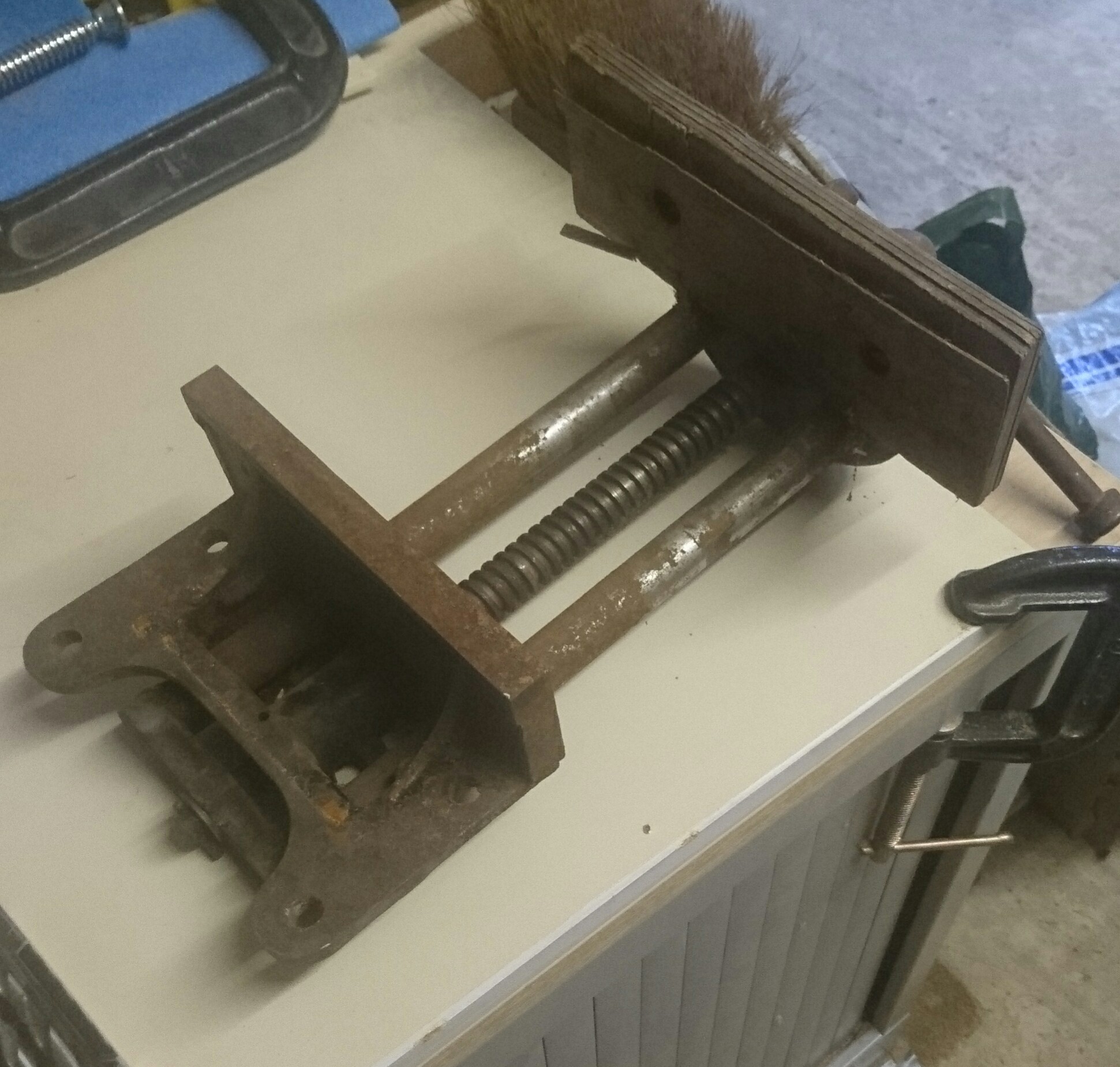i picked up an old record 52p woodworking vice that im planning to clean up and mount on a bench top.
the question i have is what is the best way to mount it to the underside of the bench?
as can be seen there are two radiused webs that will prevent me from mounting the vice flat to the bench.
im thinking of making some spacers that clear the two webs and provides a flat mounting face.
other that that is there a conventional method of mounting these vices to the underside of a bench
ta
the question i have is what is the best way to mount it to the underside of the bench?
as can be seen there are two radiused webs that will prevent me from mounting the vice flat to the bench.
im thinking of making some spacers that clear the two webs and provides a flat mounting face.
other that that is there a conventional method of mounting these vices to the underside of a bench
ta


